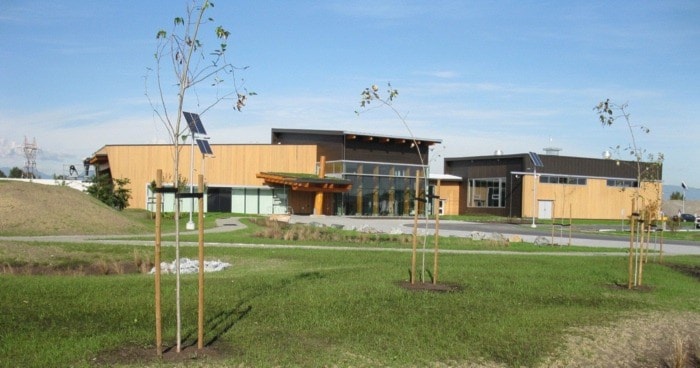When it comes to higher learning, the study of sewage may not be the first academic pursuit that springs to mind.
But Metro Vancouver is betting its new $9-million Annacis Wastewater Centre will offer a tempting real-life lab for scientists and engineers while yielding long-term benefits.
It officially opened Oct. 21 at Metro's biggest sewage treatment plant on Annacis Island.
And Metro officials say it's just the first in a series of planned sustainability academies where the regional district plans to partner with university researchers and private firms to find leading-edge solutions to regional problems.
Board chair Lois Jackson said the region wants to stop treating sewage simply as a waste.
"Sewage is a source of renewable energy and vital nutrients and the work that will take place in the academy will allow us to find novel and innovative ways to extract these important resources," she said.
No researchers have moved in so far.
But the first to arrive will be a UBC team exploring how to best reclaim phosphorous – an increasingly scarce commodity needed for fertilizer – from sewage.
The Annacis academy is to examine new ways to capture heat from hot water that goes down the sewers and the potential reuse of reclaimed grey water for purposes like irrigation or toilet flushing.
Another research area is the capture of biogas from local treatment plants to feed into the natural gas grid or generate electricity.
The federal and provincial governments each contributed $3 million and UBC kicked in $500,000, so Metro's net capital cost was $2.5 million.
UBC civil engineering professor Don Mavinic said the academy is a welcome addition that will allow researchers to test and demonstrate new green technologies.
Planners at Metro hope fees paid by researchers and other consultants to use the centre will cover annual operating costs.
They also predict the capital investment will more than pay for itself by helping the region generate more revenue from resource recovery and rein in the cost of future sewage treatment plants – two plant replacements are on the drawing board at an estimated cost of $1.4 billion.
"A relatively small investment is going to pay off big time for society in the long run," Metro chief administrator Johnny Carline said.
Separating nutrients and contaminants from sewage and capturing the gases that burp out also helps the environment by reducing ocean pollution and greenhouse gas emissions.
Other sustainability academies being planned include one dedicated to sustainable food production at Colony Farm Regional Park and another focusing on drinking water treatment technology at the new Seymour Capilano Filtration Plant.
